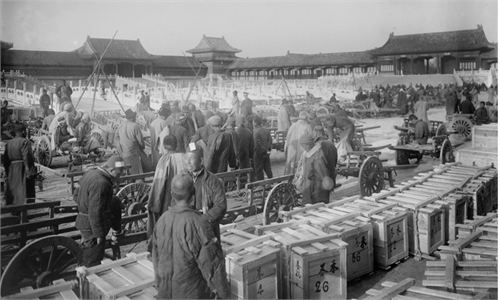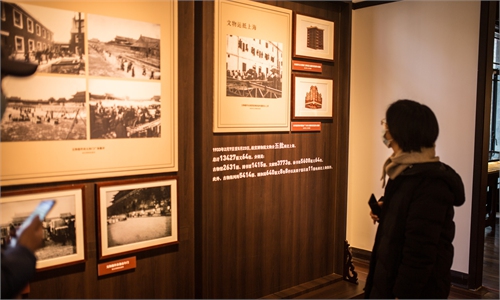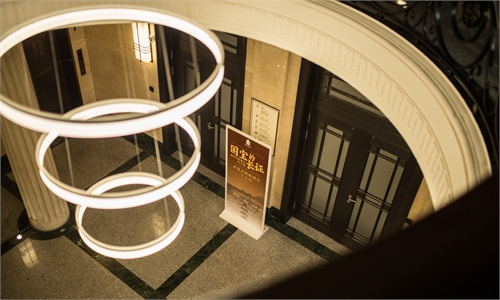IN-DEPTH / IN-DEPTH
Witness to History: Descendants recount WWII relic evacuation, showcasing Chinese cultural influence, unity in crisis
Editor's Note:
On July 7, 1937, Japanese soldiers attacked Chinese forces at the Lugou Bridge in Beijing. The incident is recognized as the start of Japan's full-scale invasion of China and China's whole-nation resistance against the Japanese aggression.
In those years of heroic resistance, to avoid the ravages of war, the Palace Museum in Beijing spearheaded the evacuation of over 19,000 boxes of cultural relics from institutions such as the National Museum of Art (Guwu Chenliesuo in Chinese), the Summer Palace, and the Imperial College (Guozijian in Chinese).
This massive evacuation spanned over two decades, covering more than 10 provinces and cities and tens of thousands of miles. The process included southward, westward, and eastward evacuations, relocation to the island of Taiwan, and return to the north.
Despite the immense hardships, the artifacts were largely preserved, achieving a monumental feat that stands as the largest-scale, most extensive, and longest-lasting effort to protect cultural heritage artifacts during World War II.
Now, more than 80 decades later, many of the guardians of these artifacts are long gone, but their stories live on. The descendants of those born during the evacuation, still willing to recount their experiences as eyewitnesses, tell us about that special era and the spirit of cultural preservation inherited by the people of the Palace Museum across the Straits.
This story is also a part of the Global Times' "Witness to History" series, which features first-hand accounts from witnesses who were at the forefront of these historic moments. From scholars, politicians and diplomats to ordinary citizens, their authentic reflections on the impact of historical moments help reveal a sound future for humanity through the solid forward steps taken in the past and the present.
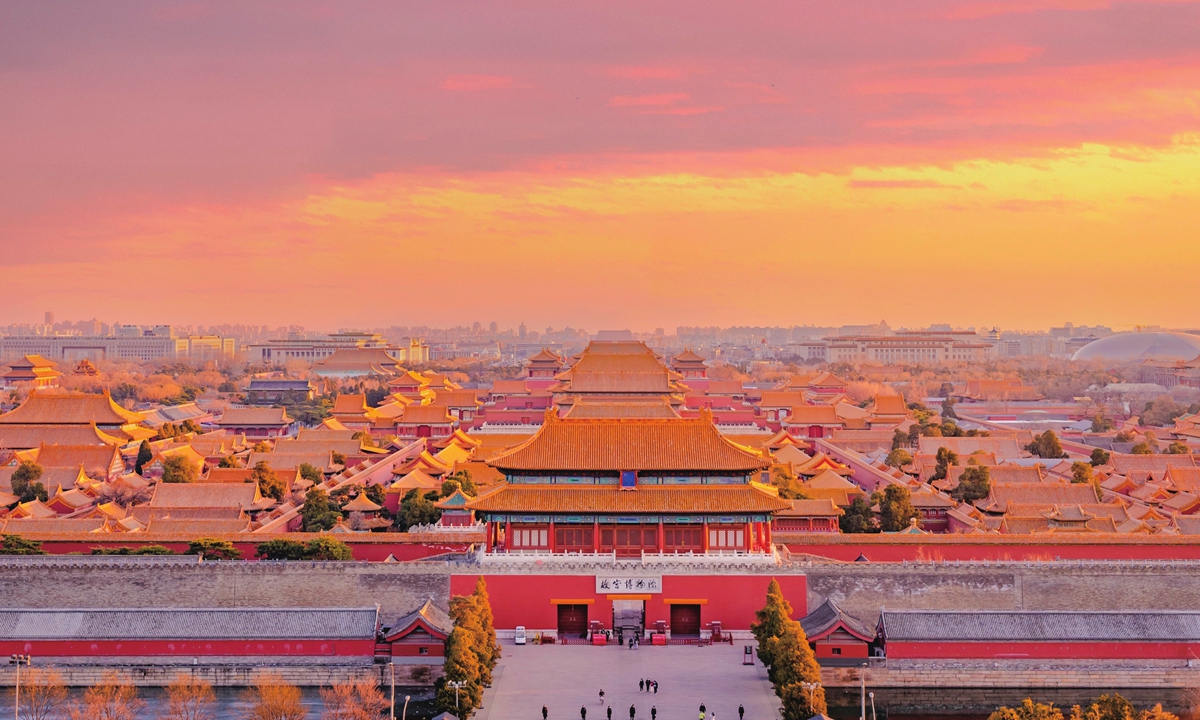
His father, Zhuang Shangyan, was the head of the first department of the Gallery of Ancient Relics (Guwu Guan in Chinese) under the Palace Museum in Beijing and was involved in the evacuation from beginning to end.
"In 1933, my father was responsible for escorting the third batch of relics from the Forbidden City to Shanghai," Zhuang Ling recounted. "On August 14, 1937, the day after the Japanese army attacked Shanghai, my father was ordered to escort the first batch of 80 large iron boxes of premium artifacts from the Palace Museum's Nanjing in East China's Jiangsu Province warehouse to the southwestern provinces."
The father first moved the artifacts to the library of Hunan University in Changsha, the capital of Central China's Hunan Province, via Wuhan, Central China's Hubei Province, for temporary storage.
On the afternoon of April 10, 1938, 27 heavy Japanese bombers raided Yuelu Mountain, reducing the entire Hunan University library to rubble. "Fortunately, the artifacts had already been transported to Guiyang, the capital of Southwest China's Guizhou Province, through Guilin, Southwest China's Guangxi Zhuang Autonomous Region, in January 1938," Zhuang Ling recalled. "I was born there in November of the same year."
At the beginning of 1939, with the war approaching Guiyang, Zhuang Shangyan was ordered to lead the first batch of southward-evacuated artifacts to Huayan Cave in the southern suburbs of Anshun, Guizhou, where they remained for six years.
"I grew up there, playing around the Huayan Cave. At that time, the Palace Museum had established an office in Guizhou. My father worked as the office director, and I attended kindergarten in Anshun," Zhuang Ling said.
In Huayan Cave, due to the humid climate in southwest China, Zhuang Shangyan and his colleagues had to air out rare books and famous paintings to prevent mold and insect damage during good weathers.
Zhuang Ling clearly remembered that whenever there was an opportunity to air out the artifacts, his father would call his four sons over to explain the historical significance of the ancient masterpieces, from Ju Ran's "Seeking the Tao in Autumn Mountains" of the Five Dynasties (907-960) to Tang Yin's "Sound of Pines on a Mountain Path" of Tang Dynasty (618-907) and "the White Goose and Red Polygonum" by Emperor Huizong from the Song Dynasty (960 - 1279).
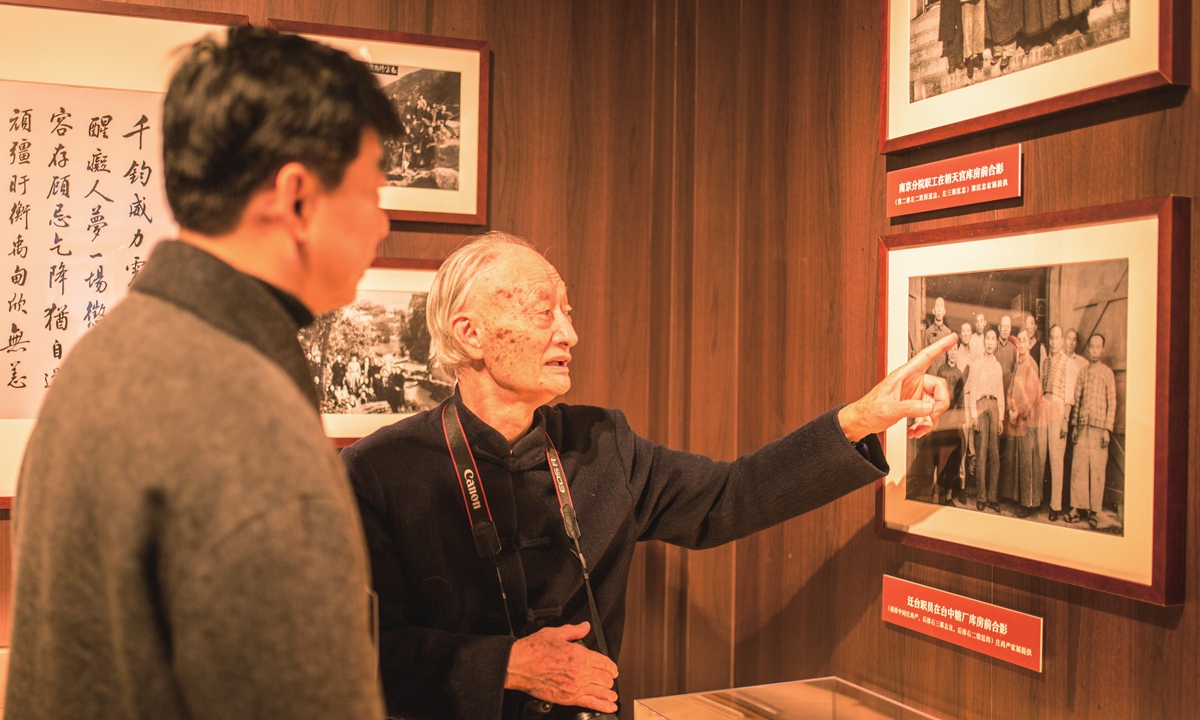
As the boys' knowledge grew, Zhuang Shangyan would play an original game with them before bedtime, where each person would name a famous painting and its artist from a particular dynasty in succession. "If we got tired or made mistakes, my father would say we needed to do chores the next day, like helping mom with weeding or raising chickens. This left a deep impression on me and cultivated our appreciation for literature and art from a young age."
In the winter of 1944, as the Japanese army captured Dushan in Guizhou, Zhuang Shangyan was urgently ordered to escort the artifacts northward to Feixianyan in Baxian county, Southwest China's Sichuan Province. Feixianyan, an early oil and gas production site in China, had already been abandoned. It was Zhuang Shangyan who named it Feixianyan and established a Palace Museum office there.
"There were no schools in the deep mountains, so my parents took my three older brothers and me to learn from nature, with my father writing poems about objects," Zhuang Ling recalled. The Palace Museum's artifacts were stored behind a stream called Tiger Creek, where, as Zhuang Ling recalled, they could hear tigers roaring at night.
Apart from ensuring the safety of the artifacts and cultivating his expertise in calligraphy, Zhuang Shangyan was also deeply involved in exhibitions, organizing or co-organizing at least seven domestic and international exhibitions during the southward evacuation.
"From the beginning of his career at the Palace Museum, he believed that organizing exhibitions was a museum worker's duty. The wartime relocation of the Palace Museum artifacts to southwest China provided a rare opportunity for people in the area to see these treasures," Zhuang Ling said.
Despite the wartime environment and material conditions, organizing exhibitions was seen as a way to enhance cultural education and uplift public art appreciation. Under the support of Palace Museum Director Ma Heng, each exhibition was successfully held, benefiting countless compatriots and foreign visitors while promoting the splendid art and culture of China worldwide.
An astounding victory
In the spring of 1946, a year after the victory of the War of Resistance Against Japanese Aggression, Zhuang Shangyan's family moved to Chongqing in Southwest China with the artifacts. "There was no longer a bomb threat, and everyone was very happy and relaxed," Zhuang Ling said.
There, Zhuang Shangyan assisted Director Ma and his colleagues at the Chongqing General Office of the Palace Museum to receive and resettle the artifacts temporarily stored in Leshan and Emei, Sichuan, totaling over 16,000 boxes.
With the concerted efforts of relevant government departments, all Palace Museum staff, and local residents, the artifacts were finally returned to the Chaotian Palace branch of the Palace Museum in Nanjing on December 8, 1947, completing the unprecedentedly arduous task of evacuating the Palace Museum artifacts during the War of Resistance Against Japanese Aggression. This monumental relocation to safeguard Chinese cultural treasures against the Japanese invasion wrote a new chapter in world history that astounded everyone.
Zhuang Ling mentioned a special story. In 1933, Zhuang Shangyan was assisting in transporting the Stone Drums of the Imperial College. Under a special request by Ma, Zhuang Shangyan carefully packed the Stone Drums.
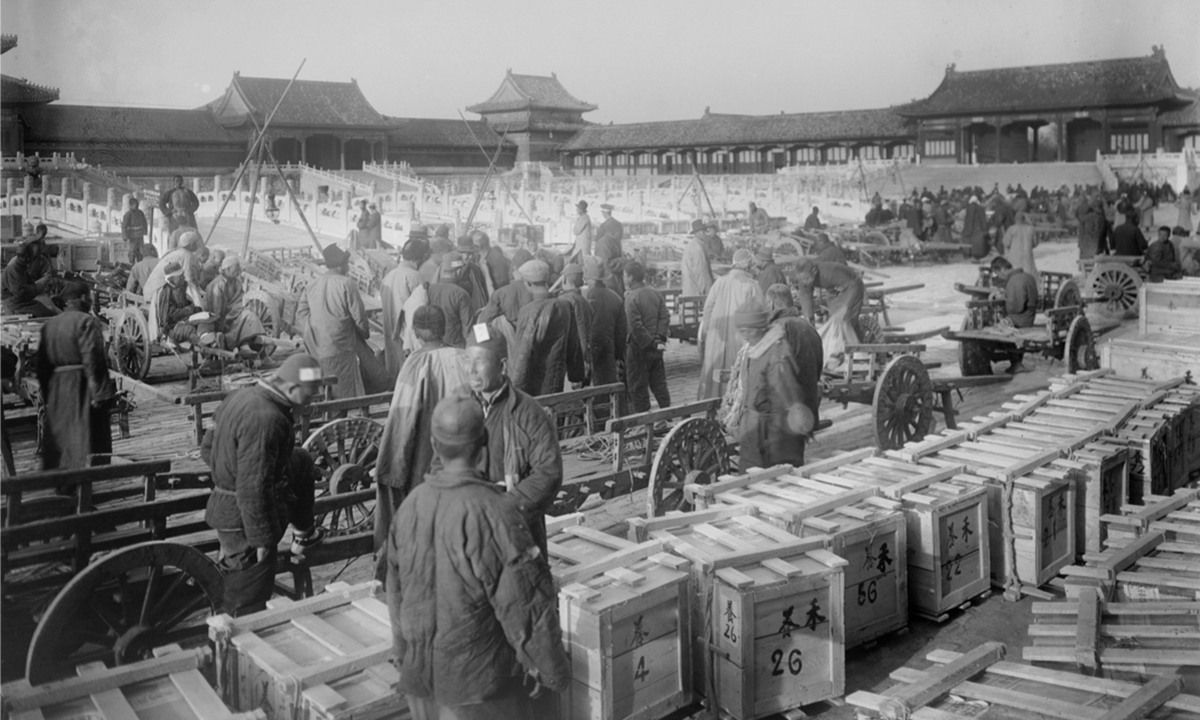
Due to the lack of communication between the Chinese mainland and the island of Taiwan at that time, Zhuang Shangyan, who was then in Taichung, Taiwan island, eventually managed to read Ye Gongchuo's article after much effort. Knowing the drums were kept well, "he was very moved and felt that his life had made meaningful contributions to the Palace Museum and the nation," Zhuang Ling recalled.
Zheng Xinmiao, former Vice Minister of Culture and former director of the Palace Museum, depicted the timeline of the great evacuation cause to the Global Times.
The institution began preparations for the evacuation in 1932, with the southward movement starting in 1933. After the Lugou Bridge Incident in 1937, the artifacts were moved westward to Sichuan until the end of the War of Resistance Against Japanese Aggression. After World War II, these artifacts were moved to the Chaotian Palace warehouse in Nanjing. At the end of 1948 and the beginning of 1949, some artifacts were transported to the island of Taiwan.
After the founding of the People's Republic of China in 1949, most of the southward-evacuated artifacts were returned to Beijing in three batches. In January 1950, the first batch of 1,500 boxes of artifacts and equipment was returned to Beijing. In February of the same year, the Palace Museum held a special exhibition of returned artifacts at the Qianqing Palace. The second and third batches were returned in June 1953 and September 1958, respectively.
The years-long evacuation of artifacts finally came to an end.
The unwavering spirit
Like Zhuang Ling, Liang Jinsheng, who has now retired from the Palace Museum in Beijing, also shares the memory of the southward evacuation.
"I am the third generation in my family to work at the Palace Museum and the fifth generation of the Forbidden City staff. My great-grandfather and great-great-grandfather were painters at the Ruyi Pavilion, and my grandfather served in the Ruyi Pavilion during the Qing court, later joining the committee for the settlement of Qing court affairs to inventory the Palace Museum artifacts after the fall of the Qing Dynasty (1644-1911)," Liang Jinsheng said. "In 1979, I passed the exam and joined the Palace Museum. When I looked through the general ledger of the Palace Museum's artifacts, I saw the records made by three generations of my family, making me feel very proud."
His grandfather Liang Tingwei and his father Liang Kuangzhong both participated in the southward evacuation of Palace Museum artifacts. His grandfather went to the island of Taiwan with some of the artifacts, while his father stayed in Nanjing to organize and oversee the return of artifacts in three batches. "He was responsible for selecting boxes and arranging transportation, all very specific tasks."
Liang Jinsheng's unique identity and experiences gave him a deep understanding of the dedication of his predecessors during the evacuation. "They made many sacrifices to protect the artifacts amid the hardships and the chaos of war."
In the archives, he read about an incident during the evacuation to Hanzhong, Shanxi. After completing the transportation and accounting of the artifacts, the staff received an air raid warning. As they evacuated to the countryside, a second alarm sounded before they reached their destination. In an emergency, they found a dry riverbed with a stone bridge and took refuge under it.
After the alarm was lifted, they saw that the original destination had been bombed, with many casualties around.
Although having retired for more than 10 years, Liang Jinsheng still contributes to the Palace Museum, cataloging and numbering artifacts. He proposed the "hibernation system" for Palace Museum artifacts, ensuring that delicate artifacts remain undisturbed during their "hibernation period" and are not taken out for exhibitions.
"For me, doing my job well now is the best way to carry on and promote the legacy of the southward evacuation," he said.
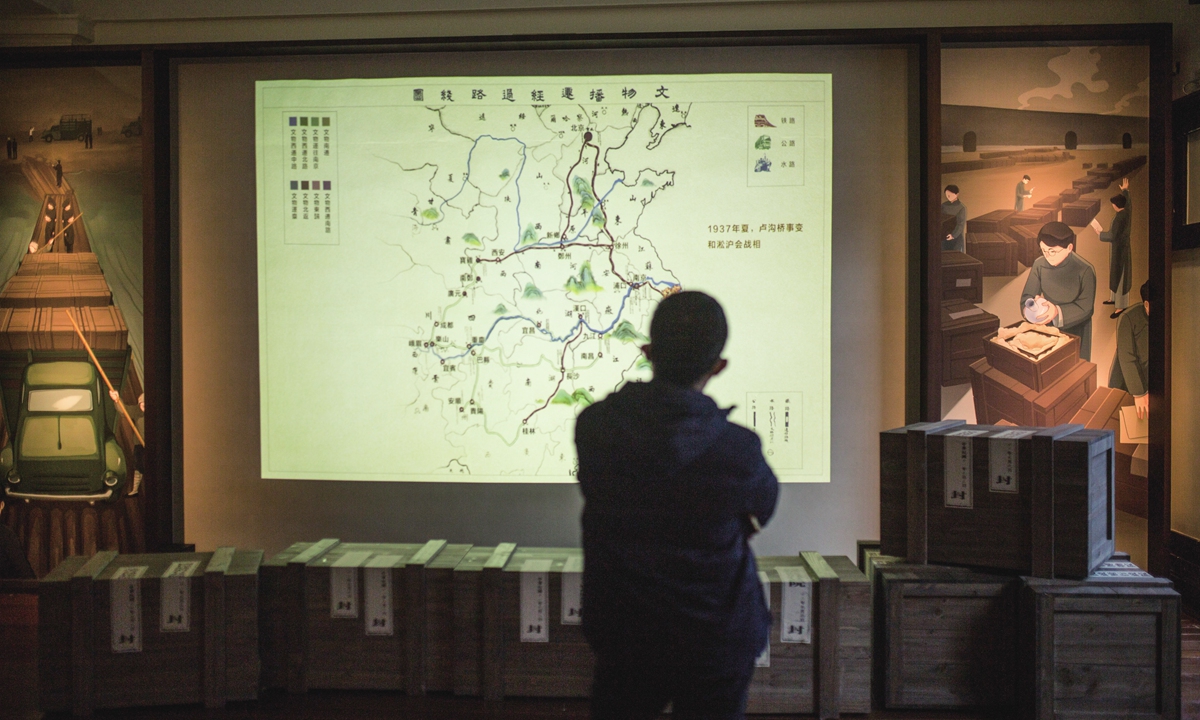
To commemorate this invaluable piece of national history, in December 2023, the Palace Museum and the National Humanities History magazine co-hosted an exhibition in Shanghai, the first stop of the southward evacuation, to recreate the historical memory of the evacuation using diverse display methods. This exhibition led the audience to relive the stories of the predecessors' relentless efforts and sacrifices to protect national treasures.
"The history of the southward evacuation of the Palace Museum artifacts is not just a history of the Palace Museum, but also a history of the nation and the people," said Wang Xudong, director of the Palace Museum in Beijing at the exhibition. "The evacuation exemplified the influence and appeal of Chinese culture, demonstrated the unity of the Chinese people in times of crisis, safeguarded over 5,000 years of splendid Chinese civilization, and effectively promoted it worldwide."
Across the Straits
At the end of 1948, as the War of Liberation (1946-49) intensified, Zhuang Shangyan was once again ordered to escort the first batch of 320 boxes of southward-evacuated Palace Museum artifacts, along with cultural and archival materials from institutions, aboard the naval freighter Zhongding from the Nanjing Xiaguan Wharf to the island of Taiwan.
"Our whole family followed the Zhongding ship to Taiwan. I was 10 years old then, a fourth-grade student in elementary school. Thinking back, it was 75 years ago, yet it feels like yesterday," Zhuang Ling said.
It is known that from the end of 1948 to early 1949, over 2,900 boxes of artifacts were transported to the island of Taiwan in three batches, totaling approximately 700,000 items, including 400,000 archives, 200,000 books (including the Complete Library of the Four Treasuries), and over 70,000 pieces of cultural relics including bronze, porcelain, jade, calligraphy, and paintings.
"These artifacts transported to the island of Taiwan were very refined," Zhuang Ling said.
Under this context, the Taipei Palace Museum was established. People like Zhuang Shangyan continued to guard these artifacts that bore witness to the shared history of both sides of the Straits on the island.
"From 1924 to 1969, my father worked at the Palace Museum, starting as a clerk and rising to deputy director of the Taipei Palace Museum. He dedicated his life to safeguarding cultural relics," Zhuang Ling said.
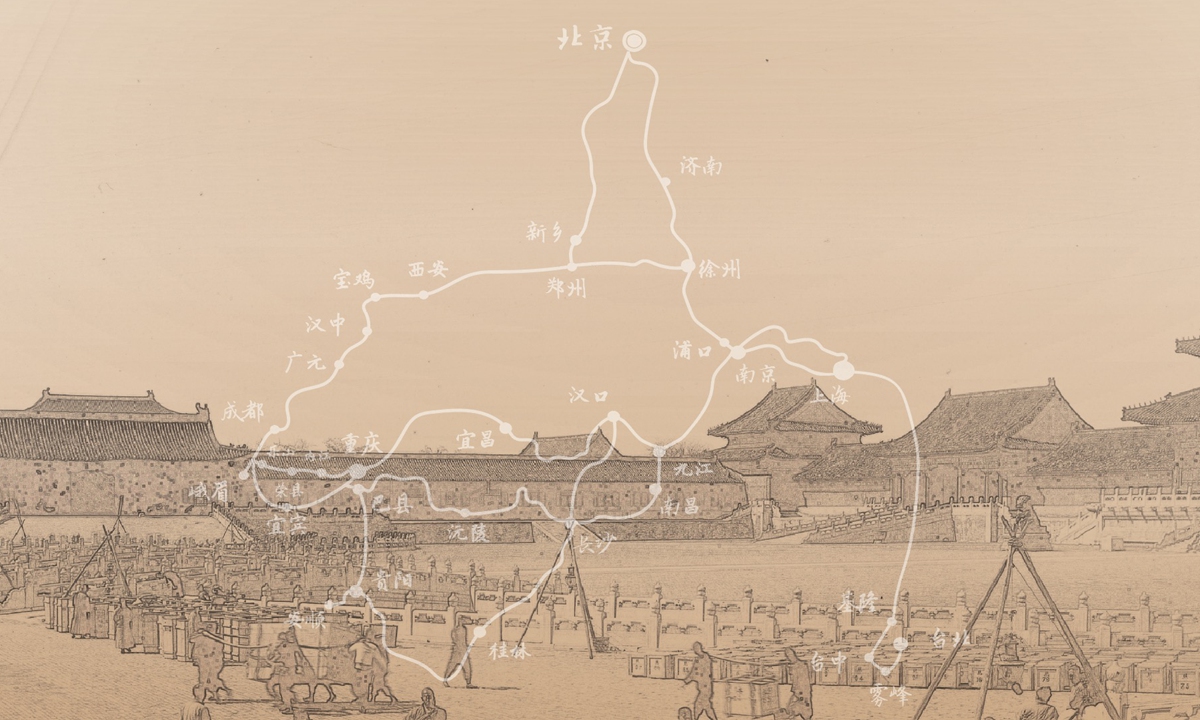
"In Taiwan island, the Taipei Palace Museum houses nearly 700,000 artifacts, with over 85 percent originating from the Palace Museum of Beijing," Fung Ming-chu, former director of the Taipei Palace Museum, told the Global Times. These artifacts were stored in cave warehouses for a long time, deeply reminding people of the wartime memories. "Due to the events during the War of Resistance Against Japanese Aggression, the cultural relics protection personnel were afraid of Japanese air raids."
"Today, the artifacts at the Taipei Palace Museum are stored in modern warehouses. We spare no effort in ensuring their safety, continuously organizing, repairing, and researching them. Our practices are inherited from the original Palace Museum in Beijing," Fung said. "Currently, there is growing emphasis on promoting the spirit of the relics' evacuation. We organize exhibitions and symposiums to share historical research on the relocation of the Palace Museum's artifacts."
"Our predecessors have published several memoirs, providing insights into their experiences. Through these narratives, we gain a profound understanding of how the previous generation of Chinese cultural preservationists valued cultural relics more than their own lives. I firmly believe that the relocation of the Palace Museum's artifacts and the preservation spirit of the older generation deserve our utmost respect and serve as valuable lessons for us to learn from," she noted.
On July 7, 1937, Japanese soldiers attacked Chinese forces at the Lugou Bridge in Beijing. The incident is recognized as the start of Japan's full-scale invasion of China and China's whole-nation resistance against the Japanese aggression.
In those years of heroic resistance, to avoid the ravages of war, the Palace Museum in Beijing spearheaded the evacuation of over 19,000 boxes of cultural relics from institutions such as the National Museum of Art (Guwu Chenliesuo in Chinese), the Summer Palace, and the Imperial College (Guozijian in Chinese).
This massive evacuation spanned over two decades, covering more than 10 provinces and cities and tens of thousands of miles. The process included southward, westward, and eastward evacuations, relocation to the island of Taiwan, and return to the north.
Despite the immense hardships, the artifacts were largely preserved, achieving a monumental feat that stands as the largest-scale, most extensive, and longest-lasting effort to protect cultural heritage artifacts during World War II.
Now, more than 80 decades later, many of the guardians of these artifacts are long gone, but their stories live on. The descendants of those born during the evacuation, still willing to recount their experiences as eyewitnesses, tell us about that special era and the spirit of cultural preservation inherited by the people of the Palace Museum across the Straits.
This story is also a part of the Global Times' "Witness to History" series, which features first-hand accounts from witnesses who were at the forefront of these historic moments. From scholars, politicians and diplomats to ordinary citizens, their authentic reflections on the impact of historical moments help reveal a sound future for humanity through the solid forward steps taken in the past and the present.

The Palace Museum in Beijing Photo: VCG
Zhuang Ling, 86, had an unusual childhood. Born during the southward evacuation of the Palace Museum's artifacts, he grew up moving constantly with his parents and the evacuated relics.His father, Zhuang Shangyan, was the head of the first department of the Gallery of Ancient Relics (Guwu Guan in Chinese) under the Palace Museum in Beijing and was involved in the evacuation from beginning to end.
"In 1933, my father was responsible for escorting the third batch of relics from the Forbidden City to Shanghai," Zhuang Ling recounted. "On August 14, 1937, the day after the Japanese army attacked Shanghai, my father was ordered to escort the first batch of 80 large iron boxes of premium artifacts from the Palace Museum's Nanjing in East China's Jiangsu Province warehouse to the southwestern provinces."
The father first moved the artifacts to the library of Hunan University in Changsha, the capital of Central China's Hunan Province, via Wuhan, Central China's Hubei Province, for temporary storage.
On the afternoon of April 10, 1938, 27 heavy Japanese bombers raided Yuelu Mountain, reducing the entire Hunan University library to rubble. "Fortunately, the artifacts had already been transported to Guiyang, the capital of Southwest China's Guizhou Province, through Guilin, Southwest China's Guangxi Zhuang Autonomous Region, in January 1938," Zhuang Ling recalled. "I was born there in November of the same year."
At the beginning of 1939, with the war approaching Guiyang, Zhuang Shangyan was ordered to lead the first batch of southward-evacuated artifacts to Huayan Cave in the southern suburbs of Anshun, Guizhou, where they remained for six years.
"I grew up there, playing around the Huayan Cave. At that time, the Palace Museum had established an office in Guizhou. My father worked as the office director, and I attended kindergarten in Anshun," Zhuang Ling said.
In Huayan Cave, due to the humid climate in southwest China, Zhuang Shangyan and his colleagues had to air out rare books and famous paintings to prevent mold and insect damage during good weathers.
Zhuang Ling clearly remembered that whenever there was an opportunity to air out the artifacts, his father would call his four sons over to explain the historical significance of the ancient masterpieces, from Ju Ran's "Seeking the Tao in Autumn Mountains" of the Five Dynasties (907-960) to Tang Yin's "Sound of Pines on a Mountain Path" of Tang Dynasty (618-907) and "the White Goose and Red Polygonum" by Emperor Huizong from the Song Dynasty (960 - 1279).

Zhuang Ling (right) points at an old photo at the southward evacuation of the Palace Museum's artifacts exhibition in Shanghai in December 2023. Photo: Shan Jie/GT
As the boys' knowledge grew, Zhuang Shangyan would play an original game with them before bedtime, where each person would name a famous painting and its artist from a particular dynasty in succession. "If we got tired or made mistakes, my father would say we needed to do chores the next day, like helping mom with weeding or raising chickens. This left a deep impression on me and cultivated our appreciation for literature and art from a young age."
In the winter of 1944, as the Japanese army captured Dushan in Guizhou, Zhuang Shangyan was urgently ordered to escort the artifacts northward to Feixianyan in Baxian county, Southwest China's Sichuan Province. Feixianyan, an early oil and gas production site in China, had already been abandoned. It was Zhuang Shangyan who named it Feixianyan and established a Palace Museum office there.
"There were no schools in the deep mountains, so my parents took my three older brothers and me to learn from nature, with my father writing poems about objects," Zhuang Ling recalled. The Palace Museum's artifacts were stored behind a stream called Tiger Creek, where, as Zhuang Ling recalled, they could hear tigers roaring at night.
Apart from ensuring the safety of the artifacts and cultivating his expertise in calligraphy, Zhuang Shangyan was also deeply involved in exhibitions, organizing or co-organizing at least seven domestic and international exhibitions during the southward evacuation.
"From the beginning of his career at the Palace Museum, he believed that organizing exhibitions was a museum worker's duty. The wartime relocation of the Palace Museum artifacts to southwest China provided a rare opportunity for people in the area to see these treasures," Zhuang Ling said.
Despite the wartime environment and material conditions, organizing exhibitions was seen as a way to enhance cultural education and uplift public art appreciation. Under the support of Palace Museum Director Ma Heng, each exhibition was successfully held, benefiting countless compatriots and foreign visitors while promoting the splendid art and culture of China worldwide.
An astounding victory
In the spring of 1946, a year after the victory of the War of Resistance Against Japanese Aggression, Zhuang Shangyan's family moved to Chongqing in Southwest China with the artifacts. "There was no longer a bomb threat, and everyone was very happy and relaxed," Zhuang Ling said.
There, Zhuang Shangyan assisted Director Ma and his colleagues at the Chongqing General Office of the Palace Museum to receive and resettle the artifacts temporarily stored in Leshan and Emei, Sichuan, totaling over 16,000 boxes.
With the concerted efforts of relevant government departments, all Palace Museum staff, and local residents, the artifacts were finally returned to the Chaotian Palace branch of the Palace Museum in Nanjing on December 8, 1947, completing the unprecedentedly arduous task of evacuating the Palace Museum artifacts during the War of Resistance Against Japanese Aggression. This monumental relocation to safeguard Chinese cultural treasures against the Japanese invasion wrote a new chapter in world history that astounded everyone.
Zhuang Ling mentioned a special story. In 1933, Zhuang Shangyan was assisting in transporting the Stone Drums of the Imperial College. Under a special request by Ma, Zhuang Shangyan carefully packed the Stone Drums.

People prepare for the southward evacuation of the Palace Museum's artifacts in Beijing in 1933 Photo: Courtesy of the Palace Museum
More than 10 years later, the Stone Drums finally returned to the Palace Museum in Beijing, and Ye Gongchuo, a renowned Chinese scholar and calligrapher, opened the boxes. Seeing the Stone Drums intact, he wrote about the experience in his article.Due to the lack of communication between the Chinese mainland and the island of Taiwan at that time, Zhuang Shangyan, who was then in Taichung, Taiwan island, eventually managed to read Ye Gongchuo's article after much effort. Knowing the drums were kept well, "he was very moved and felt that his life had made meaningful contributions to the Palace Museum and the nation," Zhuang Ling recalled.
Zheng Xinmiao, former Vice Minister of Culture and former director of the Palace Museum, depicted the timeline of the great evacuation cause to the Global Times.
The institution began preparations for the evacuation in 1932, with the southward movement starting in 1933. After the Lugou Bridge Incident in 1937, the artifacts were moved westward to Sichuan until the end of the War of Resistance Against Japanese Aggression. After World War II, these artifacts were moved to the Chaotian Palace warehouse in Nanjing. At the end of 1948 and the beginning of 1949, some artifacts were transported to the island of Taiwan.
After the founding of the People's Republic of China in 1949, most of the southward-evacuated artifacts were returned to Beijing in three batches. In January 1950, the first batch of 1,500 boxes of artifacts and equipment was returned to Beijing. In February of the same year, the Palace Museum held a special exhibition of returned artifacts at the Qianqing Palace. The second and third batches were returned in June 1953 and September 1958, respectively.
The years-long evacuation of artifacts finally came to an end.
The unwavering spirit
Like Zhuang Ling, Liang Jinsheng, who has now retired from the Palace Museum in Beijing, also shares the memory of the southward evacuation.
"I am the third generation in my family to work at the Palace Museum and the fifth generation of the Forbidden City staff. My great-grandfather and great-great-grandfather were painters at the Ruyi Pavilion, and my grandfather served in the Ruyi Pavilion during the Qing court, later joining the committee for the settlement of Qing court affairs to inventory the Palace Museum artifacts after the fall of the Qing Dynasty (1644-1911)," Liang Jinsheng said. "In 1979, I passed the exam and joined the Palace Museum. When I looked through the general ledger of the Palace Museum's artifacts, I saw the records made by three generations of my family, making me feel very proud."
His grandfather Liang Tingwei and his father Liang Kuangzhong both participated in the southward evacuation of Palace Museum artifacts. His grandfather went to the island of Taiwan with some of the artifacts, while his father stayed in Nanjing to organize and oversee the return of artifacts in three batches. "He was responsible for selecting boxes and arranging transportation, all very specific tasks."
Liang Jinsheng's unique identity and experiences gave him a deep understanding of the dedication of his predecessors during the evacuation. "They made many sacrifices to protect the artifacts amid the hardships and the chaos of war."
In the archives, he read about an incident during the evacuation to Hanzhong, Shanxi. After completing the transportation and accounting of the artifacts, the staff received an air raid warning. As they evacuated to the countryside, a second alarm sounded before they reached their destination. In an emergency, they found a dry riverbed with a stone bridge and took refuge under it.
After the alarm was lifted, they saw that the original destination had been bombed, with many casualties around.
Although having retired for more than 10 years, Liang Jinsheng still contributes to the Palace Museum, cataloging and numbering artifacts. He proposed the "hibernation system" for Palace Museum artifacts, ensuring that delicate artifacts remain undisturbed during their "hibernation period" and are not taken out for exhibitions.
"For me, doing my job well now is the best way to carry on and promote the legacy of the southward evacuation," he said.

A visitor views the routes of the southward evacuation of the Palace Museum's artifacts at the exhibition in Shanghai in December 2023. Photo: Shan Jie/GT
To commemorate this invaluable piece of national history, in December 2023, the Palace Museum and the National Humanities History magazine co-hosted an exhibition in Shanghai, the first stop of the southward evacuation, to recreate the historical memory of the evacuation using diverse display methods. This exhibition led the audience to relive the stories of the predecessors' relentless efforts and sacrifices to protect national treasures.
"The history of the southward evacuation of the Palace Museum artifacts is not just a history of the Palace Museum, but also a history of the nation and the people," said Wang Xudong, director of the Palace Museum in Beijing at the exhibition. "The evacuation exemplified the influence and appeal of Chinese culture, demonstrated the unity of the Chinese people in times of crisis, safeguarded over 5,000 years of splendid Chinese civilization, and effectively promoted it worldwide."
Across the Straits
At the end of 1948, as the War of Liberation (1946-49) intensified, Zhuang Shangyan was once again ordered to escort the first batch of 320 boxes of southward-evacuated Palace Museum artifacts, along with cultural and archival materials from institutions, aboard the naval freighter Zhongding from the Nanjing Xiaguan Wharf to the island of Taiwan.
"Our whole family followed the Zhongding ship to Taiwan. I was 10 years old then, a fourth-grade student in elementary school. Thinking back, it was 75 years ago, yet it feels like yesterday," Zhuang Ling said.
It is known that from the end of 1948 to early 1949, over 2,900 boxes of artifacts were transported to the island of Taiwan in three batches, totaling approximately 700,000 items, including 400,000 archives, 200,000 books (including the Complete Library of the Four Treasuries), and over 70,000 pieces of cultural relics including bronze, porcelain, jade, calligraphy, and paintings.
"These artifacts transported to the island of Taiwan were very refined," Zhuang Ling said.
Under this context, the Taipei Palace Museum was established. People like Zhuang Shangyan continued to guard these artifacts that bore witness to the shared history of both sides of the Straits on the island.
"From 1924 to 1969, my father worked at the Palace Museum, starting as a clerk and rising to deputy director of the Taipei Palace Museum. He dedicated his life to safeguarding cultural relics," Zhuang Ling said.

The Palace Museum cultural relics' long road to safety. Photo: Courtesy of the National Humanities History magazine
"In Taiwan island, the Taipei Palace Museum houses nearly 700,000 artifacts, with over 85 percent originating from the Palace Museum of Beijing," Fung Ming-chu, former director of the Taipei Palace Museum, told the Global Times. These artifacts were stored in cave warehouses for a long time, deeply reminding people of the wartime memories. "Due to the events during the War of Resistance Against Japanese Aggression, the cultural relics protection personnel were afraid of Japanese air raids."
"Today, the artifacts at the Taipei Palace Museum are stored in modern warehouses. We spare no effort in ensuring their safety, continuously organizing, repairing, and researching them. Our practices are inherited from the original Palace Museum in Beijing," Fung said. "Currently, there is growing emphasis on promoting the spirit of the relics' evacuation. We organize exhibitions and symposiums to share historical research on the relocation of the Palace Museum's artifacts."
"Our predecessors have published several memoirs, providing insights into their experiences. Through these narratives, we gain a profound understanding of how the previous generation of Chinese cultural preservationists valued cultural relics more than their own lives. I firmly believe that the relocation of the Palace Museum's artifacts and the preservation spirit of the older generation deserve our utmost respect and serve as valuable lessons for us to learn from," she noted.

